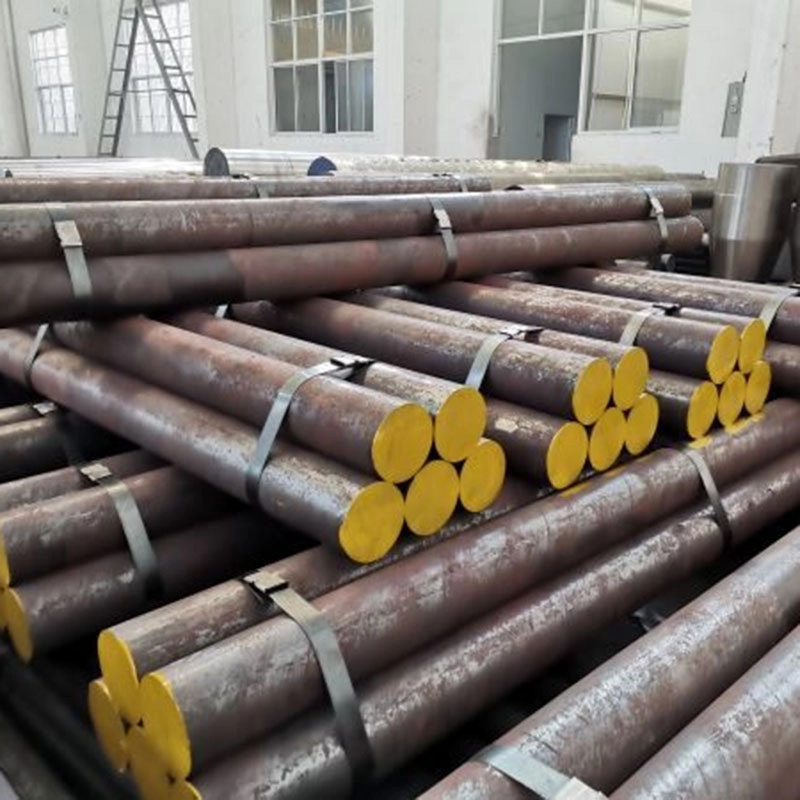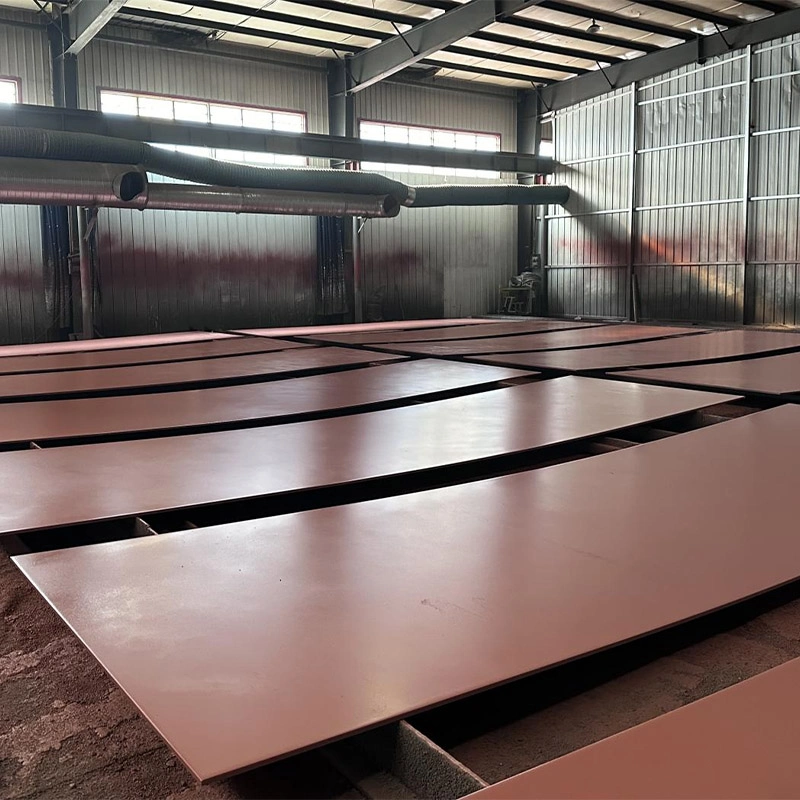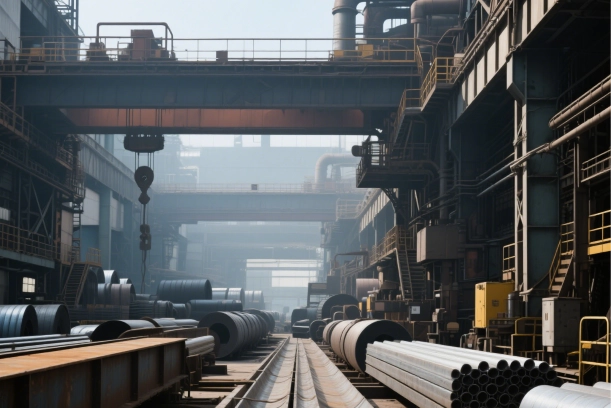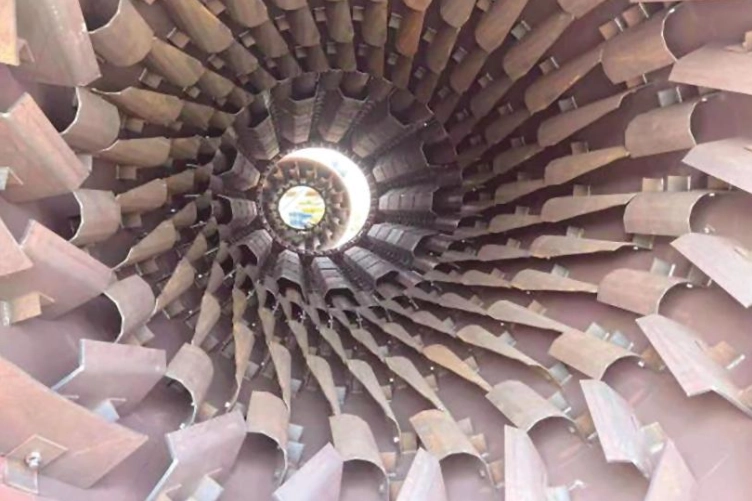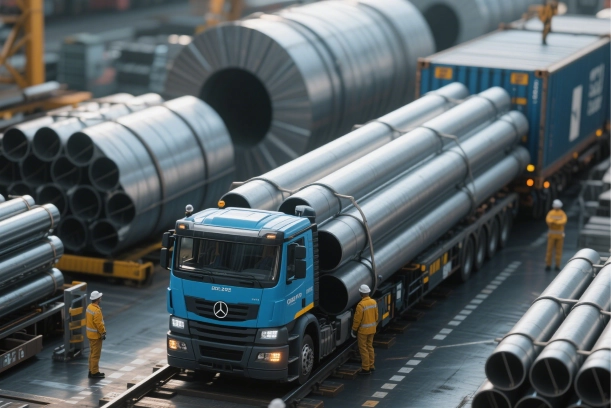
What Does AI Do in Steel Supply Chain Management?
Real-Time Data for Better Oversight
The metal supply chain creates a complicated web. It requires exact coordination and clarity to work well. Real-time AI data blending helps everyone involved. All parties can now see each production step clearly. Digital tools pull information from multiple places. Factories share data. Shipping companies provide updates. Storage centers report stock levels. These smart systems find patterns humans might miss. They help teams work better. The tracking system shows where materials are moving. Steel products get monitored constantly. Fewer shipping problems occur. Faster decisions happen daily.
AI systems rely on IoT devices and sensors to track stock levels, production speeds, and shipment updates. This setup reduces mistakes and helps firms react quickly to disruptions or demand shifts. For instance, if raw material delivery hits a snag, AI can instantly notify managers and propose other options.
Predicting Demand with Machine Learning
Knowing future demand accurately is vital for keeping the steel supply chain efficient. Machine learning tools study past data, market patterns, and outside factors like economic shifts or seasonal changes to forecast demand precisely. These predictions help firms fine-tune stock levels, cut waste, and meet customer needs well.
For example, machine learning can spot trends showing higher demand for steel in sectors like construction or car manufacturing. By seeing these patterns early, suppliers can tweak production plans and use resources smarter.
Machine learning also supports flexible forecasting that adjusts to sudden changes. If demand spikes unexpectedly, AI tools can update forecasts right away and suggest changes to production or delivery plans.
Streamlined Transport Scheduling
Transportation is a vital component of the steel supply chain, typically involving trucks, trains, or ships. AI-driven planning ensures materials reach their destination on schedule while minimizing expenses. These tools consider elements such as traffic, fuel prices, and delivery deadlines. They create optimal routes and schedules.
For instance, when moving steel across regions, AI can pick the most efficient mix of transport methods while supporting goals to cut emissions. By automating this, firms avoid human errors and boost logistics efficiency.
AI scheduling also improves teamwork among supply chain players. By sharing live updates with suppliers, carriers, and buyers, these tools foster collaboration and ensure prompt deliveries.
How Does Cutting-Edge AI Enhance Logistics?
Smarter Routes and Lower Emissions
Path planning is a key application of AI in logistics. By analyzing traffic patterns, weather, and fuel consumption, AI systems identify the quickest routes for transporting steel products. This boosts delivery speed. It saves fuel. It reduces emissions.
Sustainability is a priority for many industries, including steel. Companies are embracing greener logistics to reduce their environmental impact. AI-guided path planning supports this. It cuts down on unnecessary trips. It lowers the carbon footprint of transportation.
Plus, advanced analytics let companies track their green performance closely. By monitoring metrics like CO2 emissions per delivery or energy use in transport, businesses can set practical eco-goals and work to meet them.
AI-Enhanced Warehouse Operations
Warehouses are central hubs in the steel supply chain, holding raw materials prior to processing or shipping. Warehouse systems with AI enhance efficiency by performing tasks such as monitoring stock, picking orders, and space management. A top special steel supplier will use AI to monitor the route of the procesee in warehouse.
These systems use computer vision to keep tabs on stock levels and maintain accurate records. For example, when dealing with high-demand items like tool steel, the system can prioritize storage spots based on expected orders or shipping plans.
AI also streamlines workforce planning in warehouses. Predictive tools forecast busy times and suggest staffing changes. This keeps operations smooth during peak seasons without extra labor costs.
Collaboration Platforms for Suppliers and Partners
Teamwork among suppliers and partners is crucial for a strong steel supply chain. AI-powered platforms make communication seamless by offering a central hub for key details like order updates or production progress.
Such software applies natural language processing to immediately scan partner messages and pick up on early problems. For instance, in case a material supplier experiences delivery delays with materials for steel due to issues like machinery breakdown or transport delays, AI will immediately alert all concerned parties so that they can fix the problem at once.
By promoting openness through shared data access, these platforms build stronger ties with partners and ensure smoother operations across the supply chain.
What is Future Directions and Practical Advice of Steel?
Scaling AI with Edge Computing and 5G
Edge computing and 5G networks are set to transform the steel supply chain by enabling instant data processing and faster communication. These tools let AI process data near its source, cutting delays and boosting decision-making. In the supply chain of steel, this means IoT devices on trucks or inside warehouses can send critical updates in real time. Sensors tracking steel during transit, for example, can send real-time information regarding temperature, humidity, and location to ensure quality and timely delivery.
Edge computing also improves maintenance for equipment in steel production and logistics. By analyzing data on-site instead of using cloud systems, firms can spot potential breakdowns early. This cuts downtime and keeps materials flowing.
5G’s high-speed connections amplify these perks by supporting fast data analysis. This lets AI optimize routes fo steel or adjust warehouse tasks based on demand swings.
Ethical AI and Staying Compliant
As AI grows in the steel supply chain, tackling ethical issues and regulations is key. Ethical AI means ensuring algorithms work openly, fairly, and without bias. This matters in decisions like choosing suppliers or assigning workers, where unfair algorithms could cause problems.
Compliance is also critical as governments set tougher AI rules for industries like logistics. Firms must ensure their AI tools follow data privacy laws and industry standards. For example, when tracking steel across borders, companies need to comply with global trade and customs rules.
Using ethical AI builds trust among partners. Clear decision explanations—like stock level determination or route selection—facilitate cooperation among suppliers, makers, and buyers. With ethics and compliance prioritized, businesses minimize risks while optimizing AI benefits.
Greener Steel Logistics with AI
Sustainability is a growing priority in steel as firms aim to cut their environmental impact. AI helps by streamlining logistics to reduce emissions and resource use.
One way is through smart route-planning algorithms that find fuel-saving paths for delivering steel. These tools factor in traffic, weather, and vehicle loads to cut unnecessary miles. This lowers emissions and saves on fuel costs.
AI also boosts warehouse sustainability by saving energy. For instance, smart lighting can adjust based on occupancy or daylight. Predictive tools can also optimize heating and cooling to store materials like steel efficiently while using less energy.
AI further helps cut waste. Machine learning can spot inefficiencies in production, like tweaking cutting patterns for steel to get more from each sheet or coil.
By weaving sustainability into every supply chain step—from production to delivery—AI helps firms hit eco-targets while staying efficient. These steps position companies as leaders in green logistics, meeting rising demand for eco-friendly practices in industries like construction and automotive where Promispecial® steel shines. You can contact Promispecial® if you have any needs for steel products.
FAQ
Q: What is the steel supply chain?
A: The steel supply chain encompasses the processes from raw material extraction (iron ore, coal, limestone) to production, processing, distribution, and delivery of finished steel products to end-users like construction, automotive, and manufacturing industries.
Q: What are the key stages in the steel supply chain?
A: Key stages as below:
- Raw Material Sourcing: Mining iron ore, coal, and limestone.
- Production: Smelting raw materials in blast furnaces or electric arc furnaces to produce steel.
- Processing: Rolling, forging, or coating steel into products like sheets, bars, or coils.
- Distribution: Transporting steel to manufacturers, wholesalers, or retailers.
- End-Use: Incorporating steel into final products like buildings, vehicles, or appliances.















